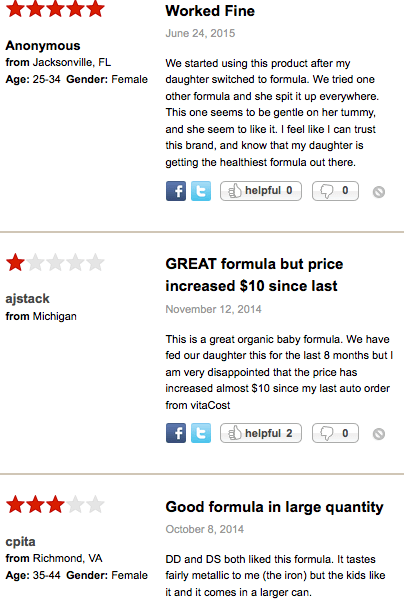This week Marcia Kaplan dropped some knowledge over at Practical Ecommerce, Paula Shannon educated us on customer engagement in the age of the “silent traveler” via Ecommerce Times, and Kat Fay of Internet Retailer told us why ranking #2 in Google might be better than going for that #1 spot (sorry Ludacris).
For more Ecommerce marketing and growth strategy content, be sure to subscribe to our blog, or follow us on Twitter or Facebook. Enjoy this week’s content!
Study: 5 Star Reviews Not Necessarily Helpful
By Marcia Kaplan – This might sound crazy, but having tons of glowing 5 star reviews on Yelp, Google, and other review sites might not be as helpful as you think. According to a study conducted by Northwestern University’s Spiegel Digital & Database Research Center, “Purchase likelihood peaks when the average star rating of a product is between 4.2 and 4.5 stars and starts to drop as the star rating approaches a perfect 5. A shopper is more likely to purchase a product with an average star rating between 4.2 and 4.5 than one with a 5 star rating.”

I know, right?! Mind. Blown. Apparently, you should be going after an average of just over 4 stars if you want your ratings to affect someone’s purchase decision. As you might have guessed, this phenomenon can be linked to the perceived authenticity of 5 star reviews. In short, people are more skeptical of legitimacy of a 5 star review than a 4 star review. The take away – don’t strive for all 5 star reviews, but focus instead on eliciting genuine customer feedback that future customers can use to make a purchase decision.
Customer Engagement in the Age of the Silent Traveler
By Paula Shannon – When was the last time you went on a trip or booked a hotel room by picking up the phone and talking to reservation specialist or travel agent? Nowadays, we use online booking systems to plan our trips, send through complaints, and claim travel vouchers. As Paula Shannon notes, we’ve entered into an age of the “silent traveler.”

Because of this, Shannon explains, companies in the travel and hospitality industries must adjust how they approach customer engagement. But what does that mean? According to Shannon, travel and hospitality companies should:
- Put language first – customize content to provide a localized experience, etc,
- Bring in the experts – join forces with local service providers to grow their local network, leverage new technologies, etc.
Sometimes the No. 2 spot on Google can beat the top spot
By Kat Fay – If I had $1 for every time a client told me that their business needed to rank #1 in Google for “Keyword X,” I’d have, like, a LOT of dollars. But here’s the thing: sometimes, the cost of earning the top spot in Google for a given keyword isn’t worth the anticipated return. Instead, as Kat Fay explains, marketers and those looking to improve their return from Google SERPS should focus on creating visual content that allows their listing to stand out, regardless of where they rank.

Fay sites a recent study from Blue Nile Research, which found that lower ranking search listings that incorporate rich media elements such as star reviews, author images, or maps are 13% more likely to earn a click than the same listing showing in position #1 without any rich media elements. As the study notes, “From images to videos to news to shopping and more, search results pages have become a virtual billboard of rich media. Now, it is common for a search result in position 1 to be a simple link, and for results further down the page to have appealing rich visual elements. Because we as human beings are wired to respond to visuals, this shift has the potential to greatly impact the consumer’s click decision.”
